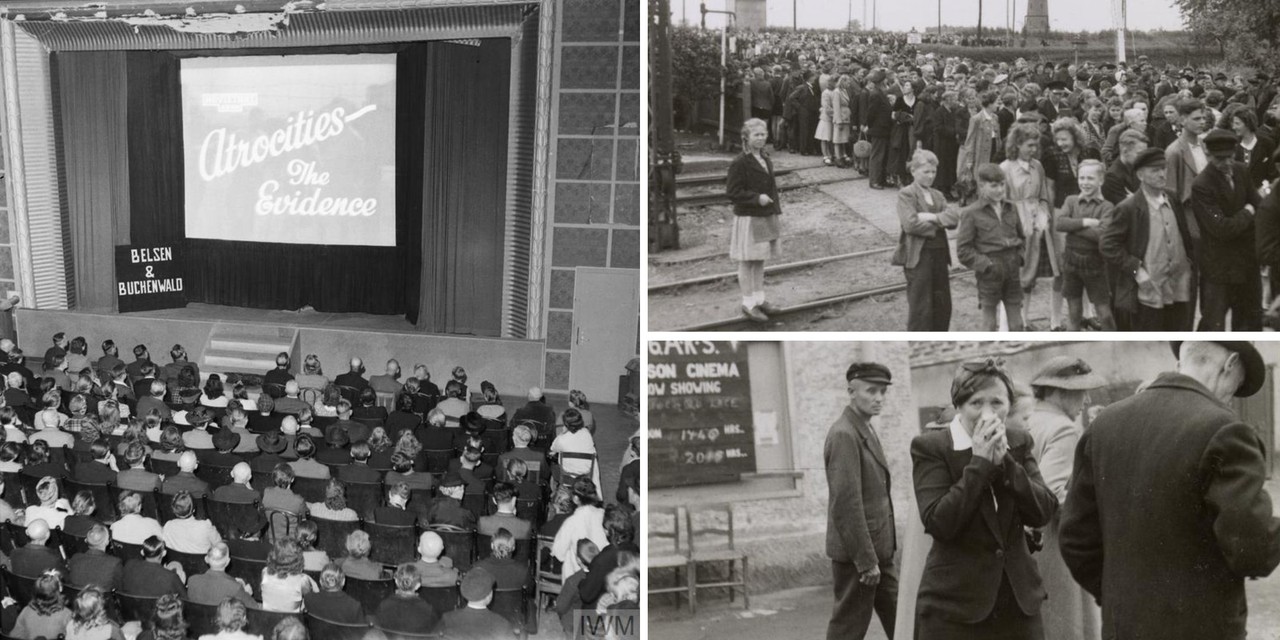The liberation of Nazi concentration camps revealed horrors that reshaped the world’s understanding of human atrocity. This article examines the discovery of the camps, the role of media in documenting the truth, and the Allies’ deliberate efforts to confront society with the evidence through the "pedagogy of horror."
Discovery of the Camps
Information about concentration and extermination camps existence had already been passed on to the Allies from 1941 onward, including the reports on the mass murder of Jews in gas chambers. However, the complete discovery occurred when the Soviet troops entered camps like Majdanek in July 1944 and Auschwitz-Birkenau, where they found evidence of mass extermination and survivors in dire conditions.
The liberation of these camps was not a pre-planned objective for the Soviets or the Western Allies but a result of their military advances. Camps like Stutthof were first discovered in November 1944, followed by others such as Dachau and Mauthausen. These liberations, often accompanied by armed confrontations with German forces, revealed horrific conditions endured by prisoners.
Liberation scenes were sometimes staged for media purposes—notably at Auschwitz and Mauthausen—to create a narrative emphasizing the victorious role of liberating forces and the joy of freed prisoners. While powerful, such reenactments sometimes lacked authenticity.
After the liberation, many camps like Dachau and Bergen-Belsen were placed under quarantine to control the spread of diseases like typhus, while others were destroyed. Survivors, often too weak to move or in poor health, faced new struggles living in the very places of their detention. Thousands continued to die despite the end of their imprisonment. At camps like Bergen-Belsen, survivors slowly began to rebuild, organizing daily life and creating committees for health, culture, and religious needs. These efforts marked the first steps toward reclaiming dignity and community.
Media Coverage
Initially, information about the camps circulated sparingly due to military censorship and directives designed not to alarm families. However, in mid-April 1945, General Eisenhower invited journalists to witness the horrors firsthand, leading to an intense press campaign. For two months, detailed reports described the reality of the camps, featuring photographs of mass graves and emaciated survivors. These "shocking" images dominated front pages and were instrumental in shaping public awareness.
Journalists played a crucial role in crafting the first public narratives of the Holocaust. While some coverage veered toward sensationalism, their emotional and outraged accounts helped convey the immense suffering of deportees. Over time, as the first trials began, reporting became more analytical, though it still struggled to capture the complex realities of concentration camps and their victims.
The difficulty in comprehending the camp system reflected both the chaotic post-liberation conditions and the diversity of survivor experiences. Journalists with personal deportation experiences, in particular, offered nuanced perspectives, highlighting how not all victims endured the same ordeals.
Media coverage of camp liberations played a vital role in documenting these atrocities and fostering initial public awareness of the Holocaust, despite its limitations in fully conveying the victims’ diversity and the system’s complexity.
The Pedagogy of Horror
"The Pedagogy of Horror" refers to the Allies' deliberate use of camp discoveries to confront society with Nazi atrocities. In numerous camps, German and Austrian civilians were forced to tour the grounds and see the evidence firsthand. Survivors provided accounts, and mass graves were left exposed to demonstrate the scale of the crimes. Civilians were even compelled to exhume and bury remains, creating a punitive yet educational experience.
© Imperial War Museum - The residents of Burgsteinfurt village march toward the Garrison Cinema for the view of Belsen and Buchenwald horror films at Garrison Cinema. Initially met with little support, the screenings became mandatory on May 30th, when 4,000 citizens were ordered to attend. Led by the Burgomaster and Captain A. Stirling, the District Assistant Provost Marshal, they marched to the cinema
Moving images played a key role in this approach. In the United States, the Special Coverage Unit (SPECOU) documented war episodes, including the camps' liberation, to collect evidence of Nazi crimes. These films were used at the Nuremberg Trials and to re-educate occupied countries.
© Imperial War Museum
The Soviets also documented the atrocities. While their initial goal was mobilizing national resistance against the Nazis, these materials, unearthed after the Soviet archives opened in the 1990s, have enriched research on liberation efforts.
This deliberate confrontation with Nazi crimes was a pivotal step in shaping historical accountability and public memory, ensuring the atrocities would not be forgotten.
